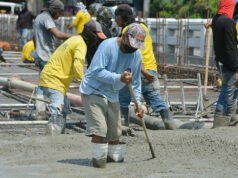RRR cut driving peso’s sharp decline
THE fresh cut in bank reserves announced by the central bank is driving the sharper decline of the peso, a global bank said, as players anticipate increased liquidity in the local financial system.
“We attribute the very recent underperformance of the Philippine peso to expectations of higher liquidity in the system,” ING Bank N.V. Manila said in a report published yesterday.
On Thursday, the Bangko Sentral ng Pilipinas (BSP) announced that the reserve requirement ratio (RRR) imposed on big banks will be trimmed to 18% starting Friday, marking the second adjustment this year for the regulatory standard.
By June 1, universal and commercial banks would only have to keep 18% of deposits vaulted under the BSP’s watch, freeing up at least P90 billion funds which they can deploy for new credit lines. This follows a cut also worth one percentage point back in March, which sought to gradually reduce the “ultra-high” reserve regime which is the steepest in Asia.
“The cut in RRR is the second this year (after one in March). Liquidity in the next few days will be high and work against the peso unless BSP directly intervenes in the spot market or external developments turn more friendly to emerging markets,” ING analysts said.
The local unit saw a three-day losing streak last week and even hit a fresh low of P52.70 versus the dollar on Friday, which came a day after the central bank announced the RRR cut. It is the currency’s weakest showing in nearly 12 years.
Apart from the additional money supply to be released by the RRR adjustment, the maturity of P130 billion worth of government-issued debt papers have also raised domestic liquidity this month, ING said.
The Bureau of the Treasury will start its offering of three-year retail bonds by Wednesday worth at least P30 billion. ING said this seeks to refinance the recent maturity and capture the additional liquidity following the RRR cut.
“BSP targets to bring the RRR to below 10% in five years… Unfortunately, the short-term liquidity would be negative for the peso.”
“There is also a longer-term impact on the currency. Banks will likely use part of the liquidity to finance corporate and government activity resulting in enhanced growth prospects for the economy. Higher growth also means higher imports and wider trade deficits.”
Moody’s Investors Service said the sustained peso depreciation would be “credit negative” for the Philippines, as a weaker currency will push up foreign borrowing costs and trigger more capital outflows. It said the peso is the second-worst performer in among regional currencies, falling by 5.2% year-to-date against the greenback. — Melissa Luz T. Lopez



